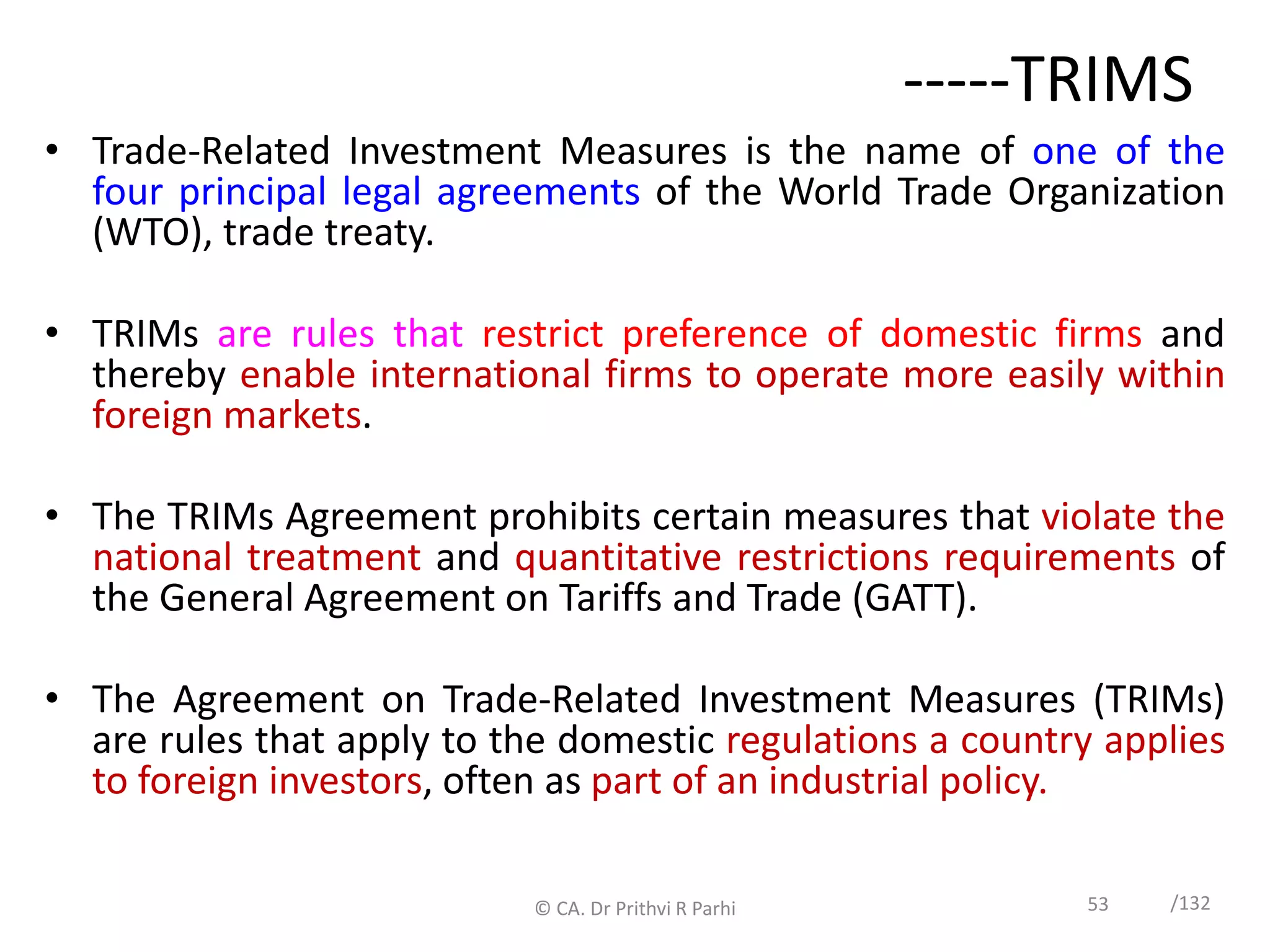The document provides an overview of the World Trade Organization (WTO). It discusses that the WTO is an organization that operates a system of trade rules between countries and provides a forum to negotiate trade agreements and settle disputes. The key principles of the WTO are that the trading system should be non-discriminatory, promote free trade, be predictable, competitive, and beneficial for less developed countries. The document also outlines some of the functions and major agreements of the WTO, including administering trade agreements, facilitating negotiations, monitoring trade policies, and providing technical assistance.
























































